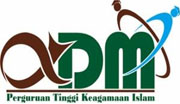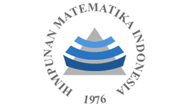Analysis of the Stability of The Smoking Distribution Model with Educational Factors and Return to Smoking Factors
Abstract
Smoking has become a serious health problem that occurs in various countries including Indonesia. Smoking causes a person to experience various health problems and also has an impact from exposure to cigarette smoke. Mathematical modeling is one of the techniques to present complex systems into mathematical models of problems that occur in the real world in the form of mathematical statements. This study aims to analyze the stability of the smoker distribution model based on the parameters to obtain simulation results of the smoker distribution system model with education factors and smoking recurrence factors. The method used in this research is literature study. The model built is a modification of the model (Syari'ah & Prawoto 2022), which is formed in the compartment diagram used to construct the model. The model used in this study is the PLSQ model. From the model, the smoker-free equilibrium point and the non-smoker-free equilibrium point can be determined. Furthermore, linearization is carried out on the system of equations so that the Jacobian matrix is obtained which is used to find eigenvalues, by determining the basic reproduction number to analyze the type of stability of the equilibrium point. Then, numerical simulation is done using matlab 23b software with the Runga-Kutta method of Order 4. Based on the results of the discussion, the stability analysis states that the smoker-free equilibrium point will be stable when and the non-smoker-free equilibrium point will be stable when . So that by adding transmission by heavy smokers and passive smokers, it takes longer to reach the equilibrium point.
Keywords
Full Text:
PDFDOI: http://dx.doi.org/10.30829/zero.v8i2.23477
Refbacks
- There are currently no refbacks.

This work is licensed under a Creative Commons Attribution-ShareAlike 4.0 International License.
Publisher : Department of Mathematics Faculty of Science and Technology Universitas Islam Negeri Sumatera Utara Medan | |
✉️ Email: zero_journal@uinsu.ac.id 📱 WhatsApp:085270009767 (Admin Official) | |
 |  |  |  |  |



